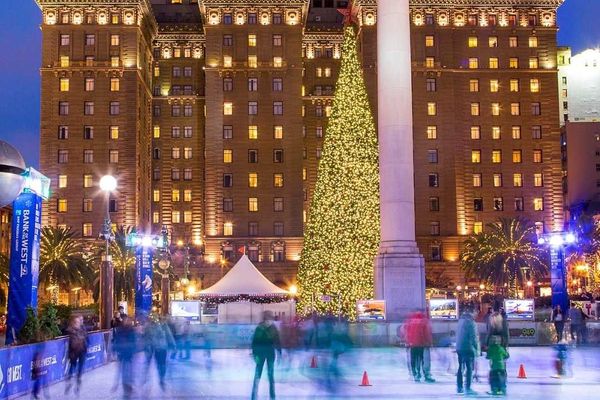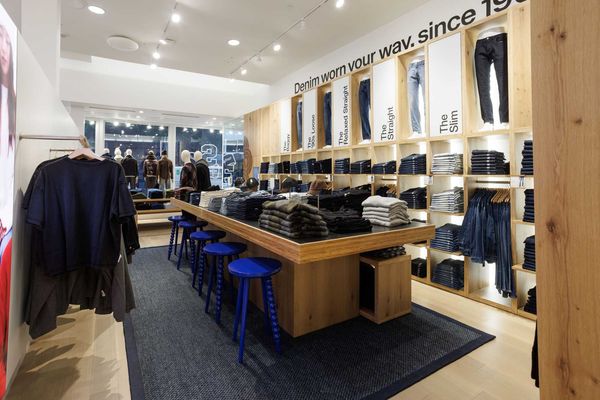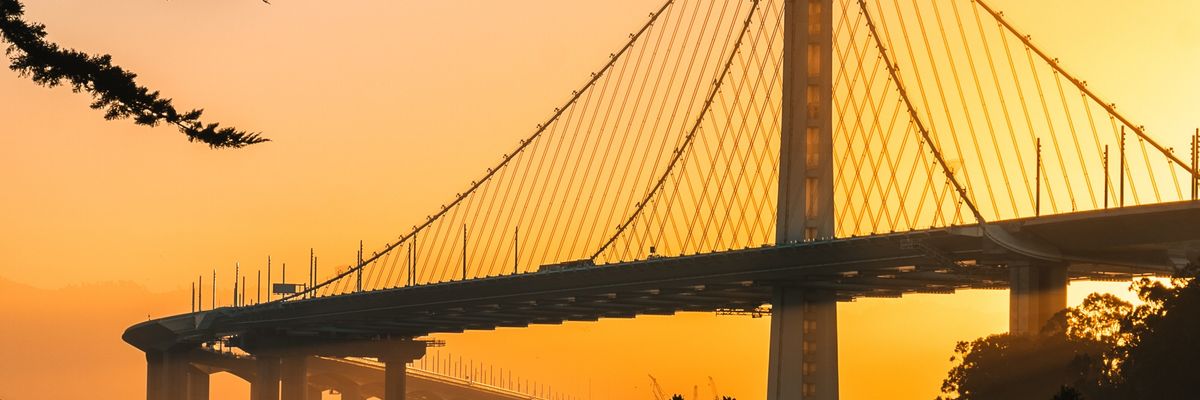Unless you’ve been living in a cave, you’re probably aware there’s a boat race going on in our backyard. And if you’re like the rest of San Francisco, that’s the extent of your knowledge about America’s Cup.
The fastest boats in the world are competing for the oldest trophy in international sport right here, right now, and many locals are too confused to care. That’s too bad, because the racing currently happening on the San Francisco Bay is some of the most exciting sports action you’ll ever encounter. If this were the NCAA Basketball Tournament, the current round of racing would be the Sweet Sixteen.
We’ve put together an America’s Cup primer for the uninitiated, in the hope that less confusion will bring more locals to America’s Cup Pavilion. Because once you’ve seen these boats fly, you can’t wait to see them again.
What is this “America’s Cup” you speak of?
It's an international boating competition that began in 1851. A schooner called “America” from the New York Yacht Club crossed the pond to race at England’s Royal Yacht Club, coming home with the Royal Yacht Squadron’s 100 Pound Cup. Over dinner one evening, they discussed what to do with the prize. Rather than melting it down into individual medallions for the winning team members, they decided to donate the trophy to the New York Yacht Club, stating that the trophy was to be “a perpetual challenge cup for friendly competition between nations.”
“Thus was born the America’s Cup, named after the winning schooner America, as opposed to the country,” says the America’s Cup website, which is chock-full of additional information about the race’s history, technology, and schedule.
Since 1851, America’s Cup has been in the hands of only four countries. The Americans held it for more than a century, until the Aussies won it in 1983. We wrested it back in 1987, then lost it to New Zealand in 1995. They held onto it until 2003, when the Swiss hired away most members of the winning Kiwi team and took the Cup back to Europe for the first time. Larry Ellison’s Team Oracle took back the Cup for America in 2010, earning the right to host this year’s race and make the rules.
What’s the big deal?
This year’s America’s Cup contest has been specifically designed to appeal to new audiences. First of all, the AC72 racing boats are big, beautiful, and blisteringly fast. With a crew of 11 on board, these 72-foot catamarans with a hard wing instead of a traditional sail weigh more than seven tons. Nevertheless, they literally rise up out of the water and fly up to 50 miles per hour, thanks to high-tech hydrofoils that drop down below the hulls.
Secondly, the race is being held near the shore. Historically, America’s Cup races have been staged a few miles out to sea, and the only way to watch was from another boat. Larry Ellison wanted to make the sport more accessible to the yacht-less masses by bringing the race to the people. The starting line is visible from Marina Green, and the finish line is located directly in front of the public viewing area at America’s Cup Pavilion, at Pier 27/29 on the Embarcadero.
Finally, the America’s Cup Pavilion and Marina Green viewing areas are free and open to the public. Even when the boats are on the other side of Alcatraz island and not visible from the shore, fans can watch the action on large screens placed throughout the Pavilion. On-board cameras and expert commentators make these 45-minute races as educational as they are exciting.
How does it work?
America’s Cup is a winner-takes-all contest. In fact, in 1851, when the schooner America sailed to victory past Queen Victoria, she asked one of her attendants who was in second place. He summed it up succinctly: “Your Majesty, there is no second.”
When a team wins the America’s Cup, that team becomes the Defender for the next race. Along with the trophy comes both the right and the responsibility to host the next race. The first team to officially challenge the Defender gets to work with the winning team to determine the rules for the next race. The type of boats, race location, and course layout change each time, but some elements remain constant.
Much like the boxing world, the Challengers must battle among themselves to win the right to sail against the Defender. So there are several rounds of racing leading up to the America’s Cup Finals. The current round of racing, called the Louis Vuitton Cup, determines who will challenge the Defender. Last month, the Kiwis won the first round (the “Round Robin”), advancing to the finals of the Louis Vuitton Cup. Currently, the Italians and the Swedes are racing one another to determine who will face the Kiwis. The winner of the Louis Vuitton Cup will face the Americans in the America’s Cup Finals. The victor of that best of seventeen series will take home the trophy and host the next event, a few years from now.
Where can I watch?
We thought you’d never ask! If you want to see the start of the race, head to Marina Green, where you can watch the boats race each other to the start. If you’d rather see the finish, go to America’s Cup Pavilion, at Pier 27/29 on the Embarcadero. From here, you can see the see the action close-up on the big screen from the comfort of a beanbag or a bar stool. When the boats make the final turn for the finish, take a short walk to the viewing point to see the sailors scream through the finish line and then come about for a close-up photo opportunity.
If you can’t make it to the water, download the America’s Cup app, which allows you to watch the action live from your phone or tablet. You can choose from several different audio options, including the on-board chatter from the sailors themselves. Another option is to subscribe to the America’s Cup YouTube channel, which features race broadcasts, as well educational videos and interviews with team members and America’s Cup experts. NBC Sports Network is also broadcasting the races, some live and some recorded.
When is the next race?
Now that the Louis Vuitton semi-finals are underway, Italy’s Luna Ross and Sweden’s Artemis are racing each other nearly every day, at 1:15 pm. There are races scheduled on August 9, 10, 12, 13 and 15. The Louis Vuitton Cup Finals are scheduled for August 17, 18, 21, 24, 25, 28 and 30, with two races per day, at 1:10 pm and 2:10 pm. The America’s Cup Final begins on September 7, with the same double-race format. The full schedule is posted online, with a day-by-day breakdown of the races, as well as the course access schedule for the Defender, Team Oracle.






















